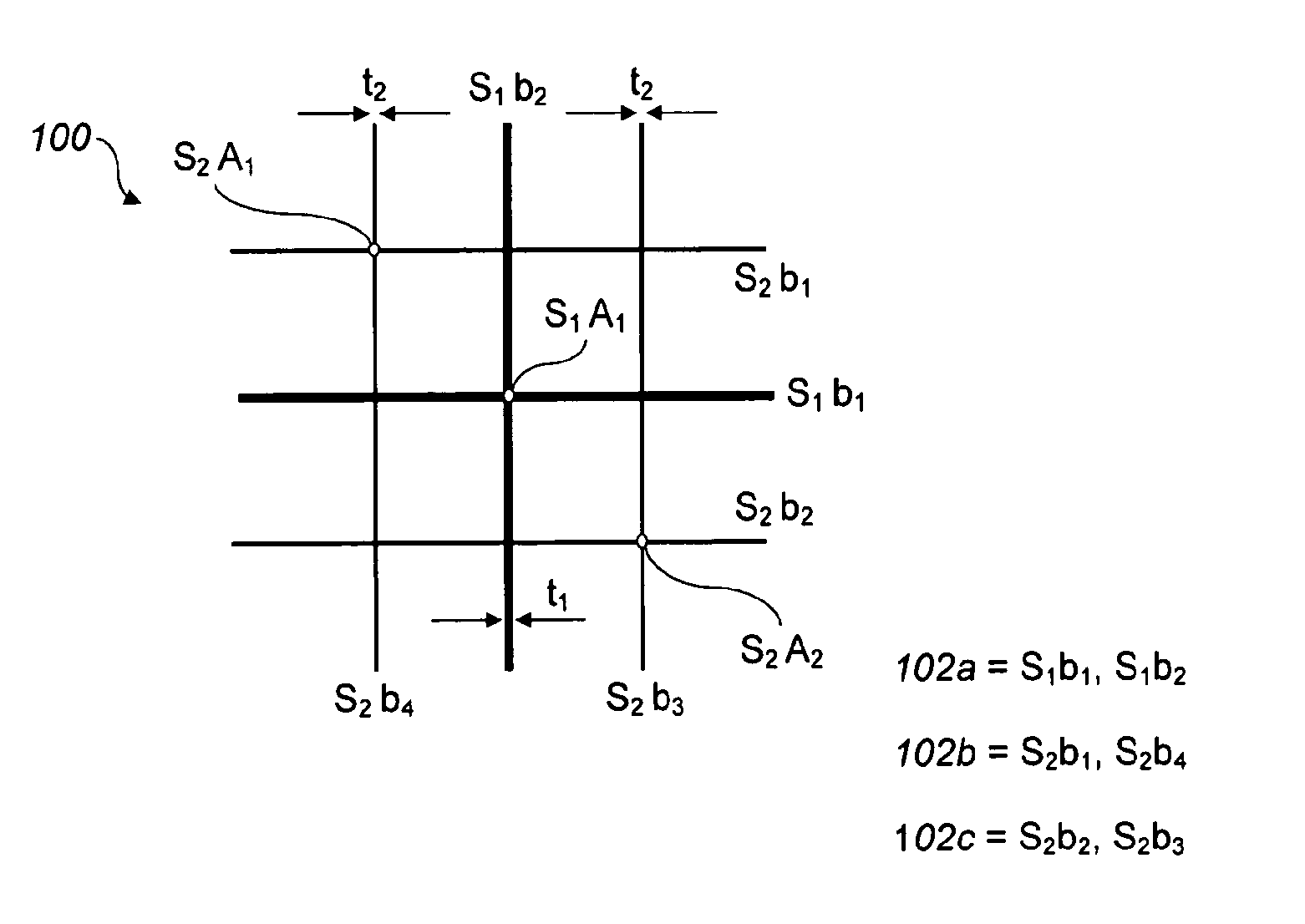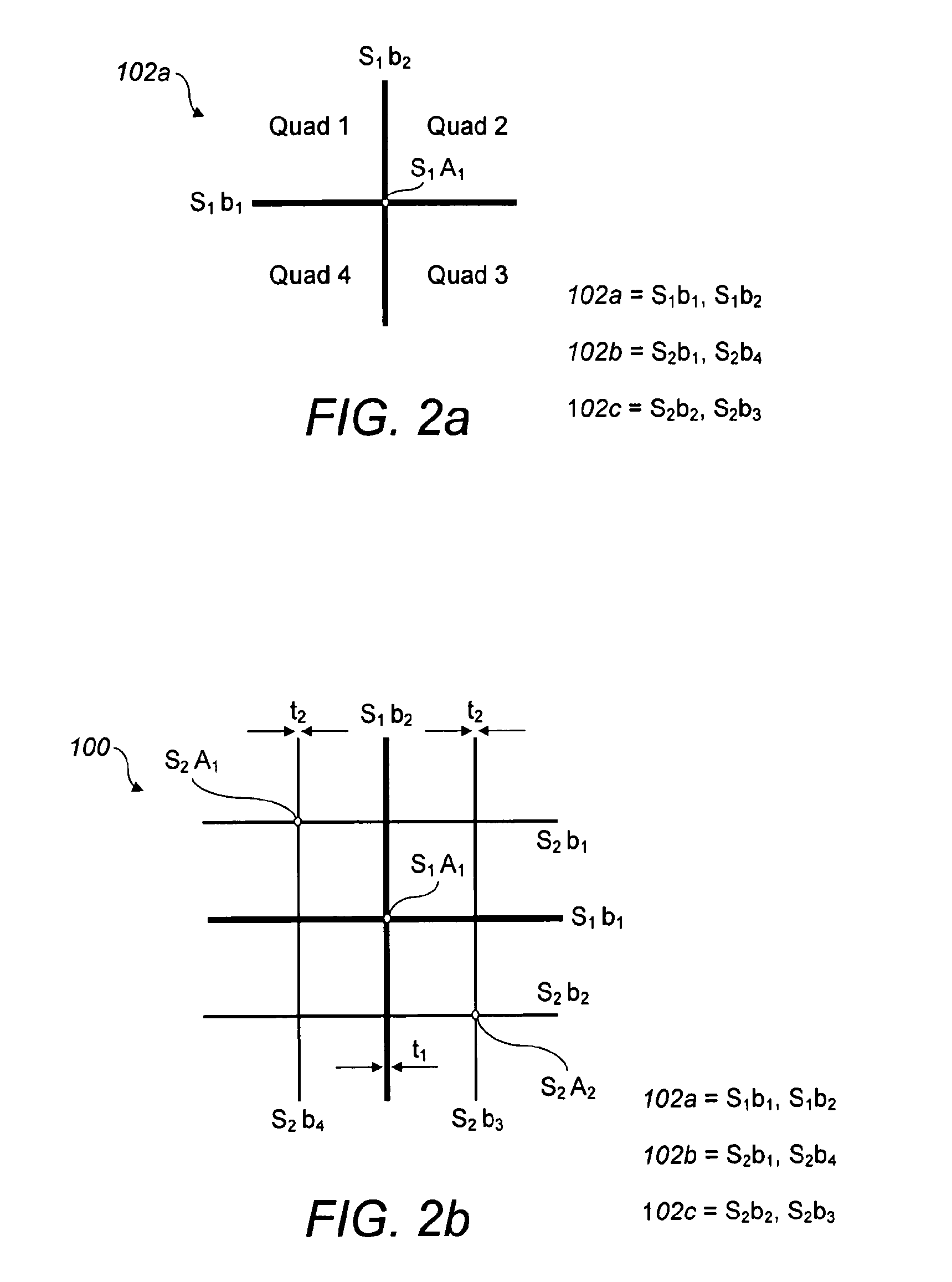Fluid flow modification apparatus
a technology of flow modification and flow field, which is applied in the direction of flow mixers, air braking surfaces, mixers, etc., can solve the problems of difficult control through artefacts, difficult to achieve control through artefacts, and extremely limited control range of flow field, etc., to achieve the effect of mixing noise control, and the applicability of such grids to applications such as mixing and noise control
- Summary
- Abstract
- Description
- Claims
- Application Information
AI Technical Summary
Benefits of technology
Problems solved by technology
Method used
Image
Examples
first embodiment
[0068]Turning now to FIGS. 2a and 2b, the fluid modification apparatus 100, hereinafter referred to as a grid, will be described. The grid 100 comprises a plurality of grid elements that are arranged symmetrically with respect to the axis of the test section 101b; the grid elements are selected so as to generate turbulence within fluid flow therethrough and in this embodiment the grid elements are embodied as generally elongate members, substantially uniform along their length, and arranged so as to form a cross-like structure 102a shown in FIG. 2a.
[0069]In this particular example the grid 100 comprises three structures: the first structure 102a is composed of elongate members S1b1 and S1b2; the second structure 102b is composed of elongate members S2b1 and S2b4; and the third structure 102c is composed of elongate members S2b2 and S2b3. For each respective structure the elongate members are interconnected via an attachment point, indicated in FIG. 2a for the first structure 102a b...
second embodiment
[0081]The number of structures making up a given set is constrained by a symmetry condition, which specifies that, with the exception of structures in the last set, each unconnected end of an elongate member in a given set is required to abut a structure in the next set. Accordingly, grid elements according to this second embodiment are arranged in a fractal configuration, since the grid 200 comprises a geometric pattern that is repeated at various scales and can be subdivided into parts, each of which is a smaller copy of the grid as a whole.
[0082]As can be seen from FIG. 5b, the elongate members S1b1, S1b2, S1b3 of the first structure 202a have a thickness different to that of the members of the second-fifth structures 202b . . . 202e, and the thickness of these second-fifth structures 202b . . . 202e is identical. Accordingly, for an example in which the grid 200 comprises two sets S1, S2 of structures, respective sets differ from one another by virtue of the thickness of the mem...
third embodiment
[0088]In a first arrangement of this third embodiment, shown in FIG. 7a, the elongate members of a given structure have the same thickness as that of members of any other structure, since a grid structure comprising grid elements, or elongate members, joined in an end-to-end configuration is itself novel. In an alternative arrangement, and as can be seen from FIG. 7c, the elongate members of the first structure 302a can have a thickness different to that of the members of the second-fifth structures 302b . . . 302e, and the thickness of these second-fifth structures 302b . . . 302e is identical. From a review of FIGS. 7a and 7c it will be noted that in either arrangement, each of the structures 302b-302e of the second set S2 abut two of the elongate members of the structure 302a of the first set S1 (for example, members S2b3 and S2b4 of structure 302b abut elongate members S1b2 and S1b2 respectively of the first structure 302a). As a result each elongate member of a structure in a g...
PUM
 Login to View More
Login to View More Abstract
Description
Claims
Application Information
 Login to View More
Login to View More - R&D Engineer
- R&D Manager
- IP Professional
- Industry Leading Data Capabilities
- Powerful AI technology
- Patent DNA Extraction
Browse by: Latest US Patents, China's latest patents, Technical Efficacy Thesaurus, Application Domain, Technology Topic, Popular Technical Reports.
© 2024 PatSnap. All rights reserved.Legal|Privacy policy|Modern Slavery Act Transparency Statement|Sitemap|About US| Contact US: help@patsnap.com










